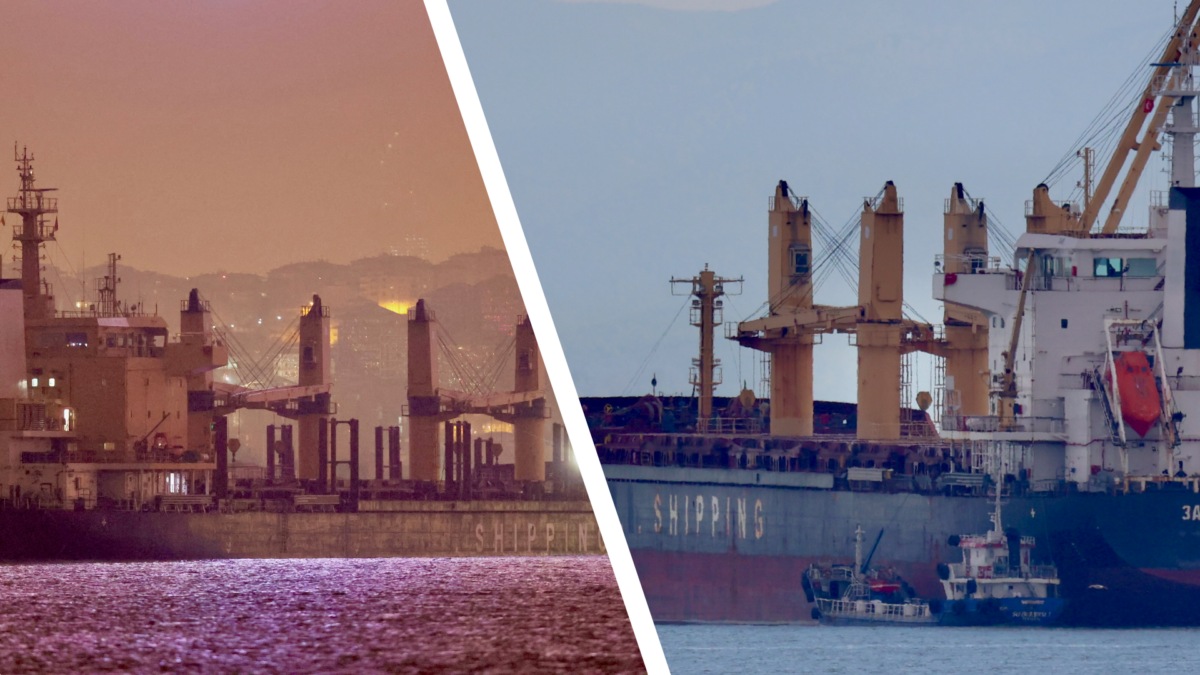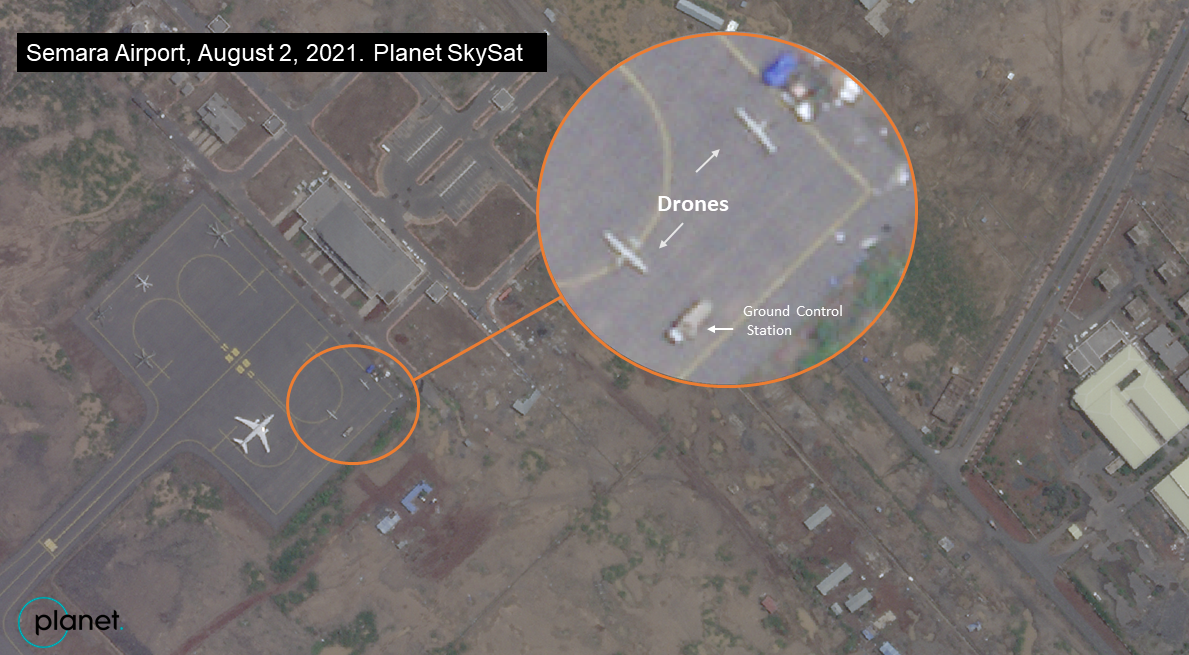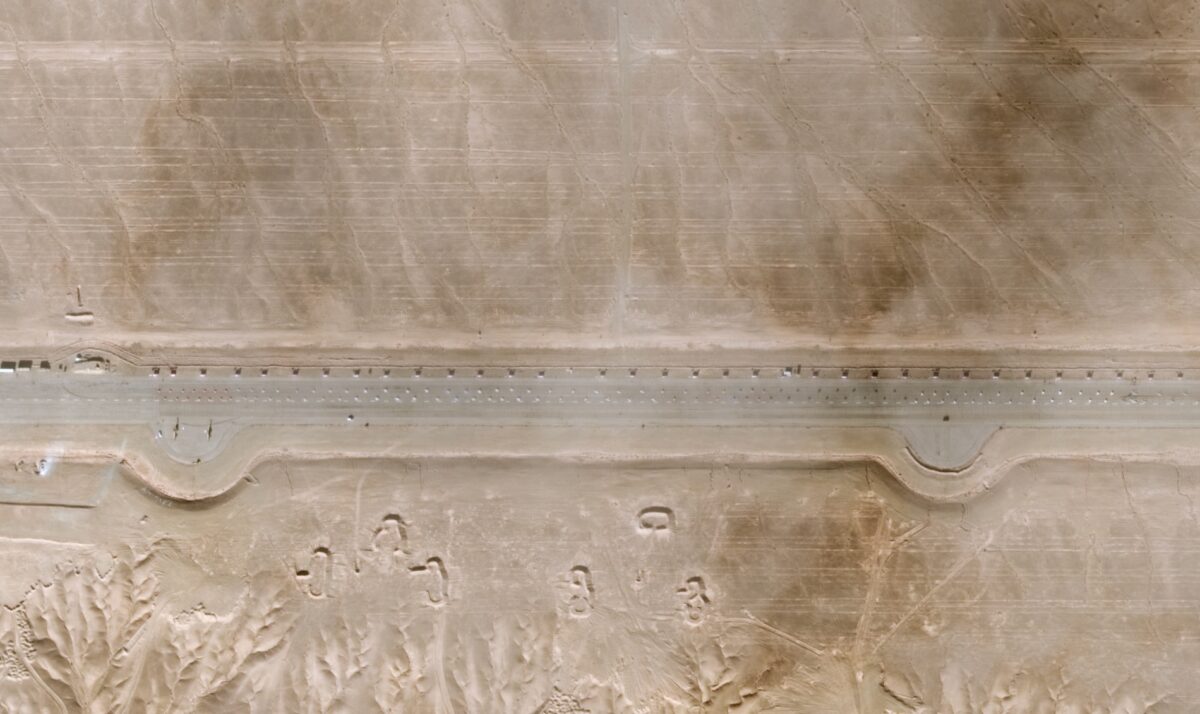Iran Bushehr Shipyard Update
An update for Iran’s southern shipyards couldn’t come at a better time. Last week, Iran unveiled the Shahid Nazeri, a high-speed catamaran helicopter carrier. Space photography available in Google Earth (28°58’33,96″N 50°51’22,68″E) shows the first signs of the new vessel’s construction back in November 2014. At the time, imagery captured the boat’s hulls protruding from a shipyard workshop in Bushehr. However, the vessel was under construction much earlier as the bridging superstructure was fitted not long after their appearance. Imagery also shows that the vessel was first launched in May 2015, berthed adjacent to the nearby ship elevator (or synchrolift) and subsequently returned to the workshop. While exact build estimates are difficult to ascertain, the Middle Eastern country has previously built catamaran vessels for the civilian sector.
Little supplemental information has been made available. Iran’s domestic press reports say the vessel can carry up to 100 people and reach speeds up to 28 knots. As far as armaments, none have been observed at this time. After the inauguration, which took place on September 13, 2016, Islamic Revolution Guards Corps Navy Admiral Ali Razmjou, commander of the 2nd naval zone, commented that the vessel will add to the country’s deterrence capability. It goes without saying, the U.S. military presence in the Persian Gulf remains a source of tension between the two countries, despite the landmark nuclear deal signed last year. Several confrontations at sea have occurred subsequently. FARS News, a government of Iran mouthpiece, further framed the boat’s construction in terms of Iran’s naval strategy by highlighting the recent construction of additional speedboats equipped with anti-ship cruise missiles and other armaments. Iran plans to swarm would-be adversaries in the strait should tensions result in conflict.
Meanwhile, the Sadra island shipyard has made further progress on the construction of the country’s oil and gas platforms. The company, controlled by the Islamic Revolution Guards Corps’ engineering firm, Khatam al Anbiya, is responsible for building platforms for the South Pars gas field, specifically phases 13, 22, 23, and 24. Sadra is one of three companies that have formed a consortium to develop facilities for the field. Pipeline construction for those phases was recently finalized, according to project reports. When complete, Phase 13 will produce 50 MMcm/d of natural gas and 80,000 b/d of gas condensate. The remaining phases are expected to produce 56 MMcm/d of sour gas, 75,000 b/d of gas condensate, 400 tons a day of sulfur, as well as 1 million tons a year of ethane and 1.1 million tons a year of liquefied petroleum gas. In June, total natural gas recovery from the field crossed 431 million cubic meters per day, managing director of Pars Oil and Gas Company said in a statement.
As far as the shipyard, no additional construction has been observed in the dry dock further confirming the death of the Iran-PDVSA deal signed back in 2006. As previously reported, the first Aframax tanker, the Sorocaima, was never delivered thanks to a weak Venezuelan economy and Western sanctions which, inter alia, made it too expensive to insure. The boat has since been renamed — the Arita — and now flies the Iranian flag. Given available AIS data, it would appear the vessel functions as floating storage. Plates of the remaining vessels still lay next to the dry dock. The Goliath gantry crane, which was erected back in 2012 to support the Aframax construction, has yet to be utilized, as far as we can tell. Imagery shows that the crane’s track has yet to be completed. Since building the first Aframax tanker, Iran has still not finished work on its first homegrown tanker which has been under construction since 2009 at the ISOICO shipyard. This may suggest that Iran failed to acquire the necessary knowledge to do so despite hiring outside consultants for the Venezuela project.
Relatedly, Iran continues to ramp up exports since implementation day, according to a recent Reuters report. Iran’s August crude oil exports jumped to more than 2 million barrels per day, a 15 percent increase from July. Iran exported 1.9 million bpd and 1.83 million bpd in June and July, respectively. Data clearly shows that August export levels rose predominantly due to higher imports from India. The South Asian giant received about 576,000 bpd in August, up from 199,000 bpd delivered a year ago when sanctions were still in effect. Before sanctions, the country was Iran’s second largest importer of crude. Essar Oil, a private firm, was the top Indian importer in August, followed by Indian Oil Corporation and Mangalore Refinery and Petrochemicals Ltd.
While exports were up, production however remained flat in August with the country pumping 3.6 million bpd, according to OPEC estimates. Despite an ongoing global crude glut, Iran won’t even consider measures to support the crude price until it returns to pre-sanction production levels. If and when that will occur remains unknown. The country plans to complete a new export terminal by the end of the year and has recently inked an agreement with Russia’s Krasnye Barrkady (Red Barricades) to construct additional rigs for exploration in the region. Never mind, the order for at least 10 new petroleum tankers from South Korea.




